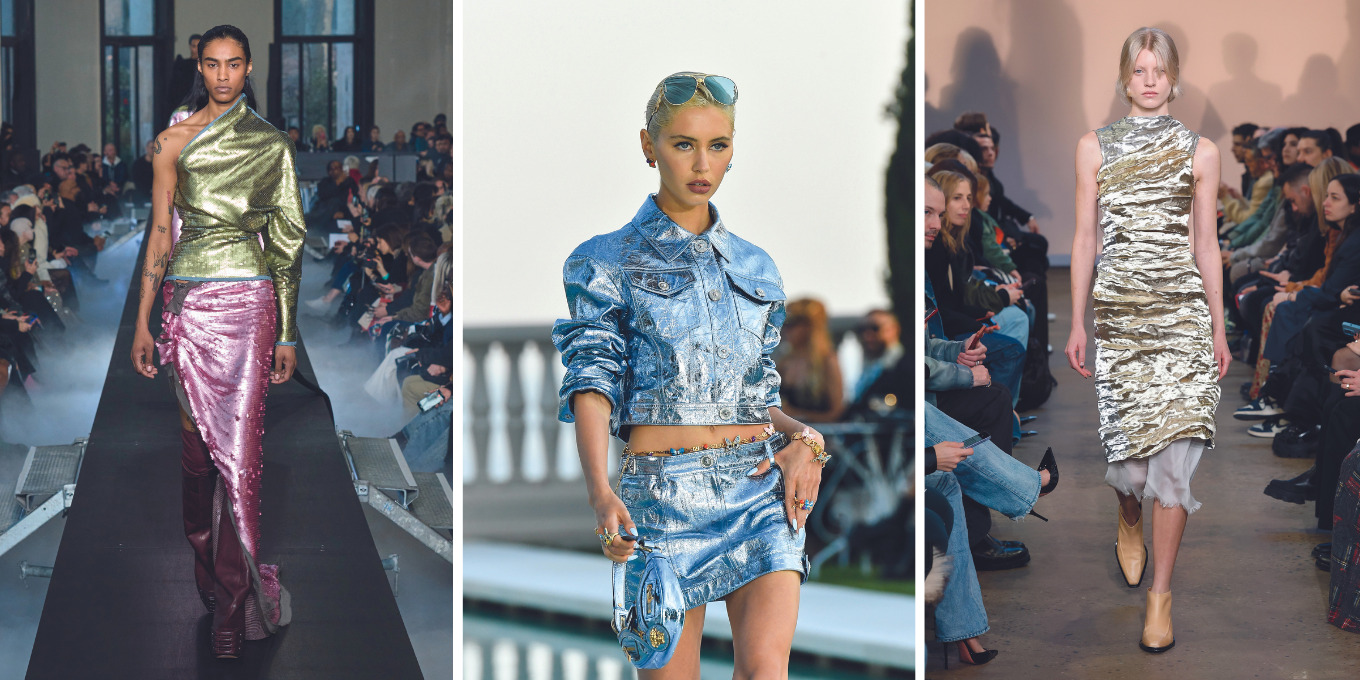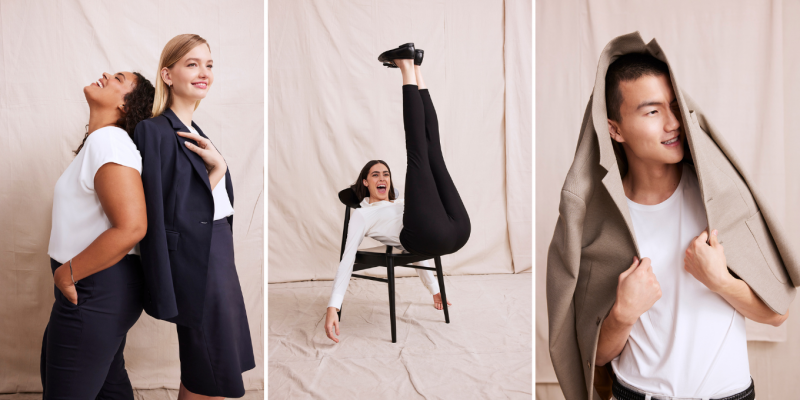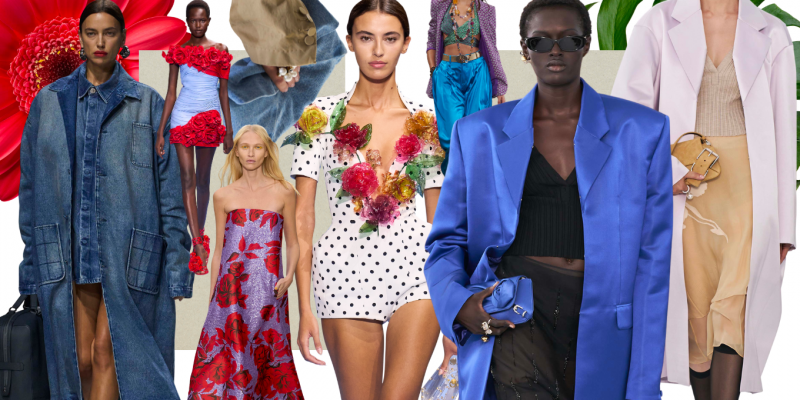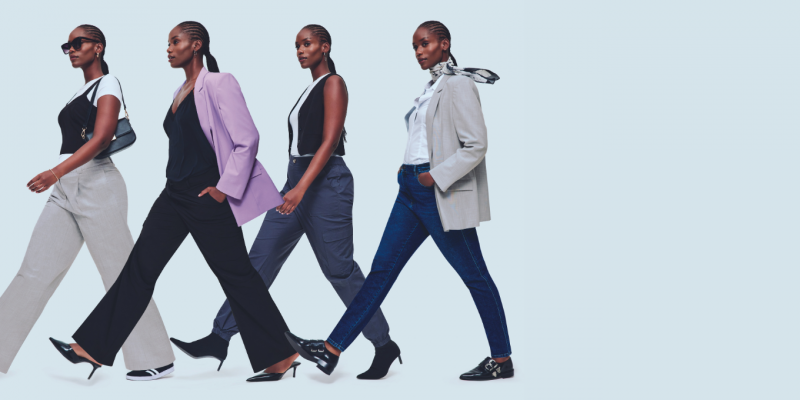Trends
The Metallic Trend Is Huge for 2023—Here’s Why
This season, our wardrobes—and our lives—have taken on a new shine.
by : Caia Hagel- Aug 21st, 2023

PHOTOGRAPHY, LAUNCHMETRICS
Emma Corrin‘s closing look on the Miu Miu fall/winter 2023/2024 runway—a fawn turtleneck paired with shimmering gold chain-link micro-shorts as small as panties—was a big mood. As TikTokable as the Miu Miu micro-skirt but with the added je ne sais quoi of lustrous metallic sparkle, this ensemble really made it feel like the vibe shift for fall had landed.
Many shades of metal have turned up since. On red carpets at Cannes, Naomi Campbell and Kaia Gerber were classily neoteric in silver Celine, while Elle Fanning’s Paco Rabanne gown, from the label’s fall/winter 2023/2024 collection, was an android-princess fantasy featuring metal paillettes, broochlike metal flowers covering the bust and a connecting necklace that turned the dress into a halter. Echoing this hot and heavy metal mood on the off-calendar runways, Balenciaga’s resort show included an extra-long silver clutch and finished with a gown awash in silvery fringe; Chanel’s closed with a twinkling rusty-golden one-piece and matching bag; Louis Vuitton’s featured goddess-like metal headpieces; and the most Instagrammed look of the Dua Lipa x Versace capsule collection was the skinny pastel metallic cocktail dress, which felt like a throwback to Austin Powers’ fembots.
Metallurgy in fashion is nothing new. The trend was first introduced in the 1930s by Hollywood actors at red-carpet appearances, and later the same decade, it entered the fashion realm of mere mortals as a thread colour when haute-couture designers invented eveningwear to distinguish night dressing from daywear. They wanted their gowns to have an element of the stars—Hollywoodian but also the literal stars in the night sky and their association with mystery, destiny and beauty. Metallics in fashion meant “rare,” “unusual,” “exclusive” and, of course, “extraordinary.”
Since its dazzling genesis, the trend has emerged periodically in tandem with reinvention and progress. Paco Rabanne’s futuristic muses Twiggy, Françoise Hardy and Brigitte Bardot wore metal gowns by the designer in the late 1960s, an era when he was creating the costumes for Barbarella, the 1968 cult film that spawned a thousand cyborg dreams. In the 1970s, metallics in fashion were symbolic of the countercultural ideas of the 1960s finally hitting the mainstream, with popular figures like the detectives in Charlie’s Angels—women who were both sexy and shrewd—proving that feminism was more than an idealistic concept as they fought crime in silvery pinks, greens, reds and blues.
When the first dot-com bubble reached its peak in 2000, metallics reappeared, a reflection of technology’s supreme role in the emerging digital culture. It was a time when tech dominated the Nasdaq index and young girls played Neopets on Steve Jobs’ archetypal glossy pink iMac G3s. And now, once again, the metal trend is shimmering back into our lives as artificial intelligence gathers momentum as a cultural and political force in our extremely online day-to-day lives.
And trends never lie. We are all technophiles. Who doesn’t, in the course of a day, speak to Alexa or Siri, the car or the appliances? Or to a chatbot every time they dial a company’s number and get routed to a help centre? Who doesn’t sleep with their phone under their pillow or close by the bed so it’s the first and last thing they touch every day, like some form of digital BFF? Who isn’t using selfie filters and giving Instagram face as they strive to be as good, relevant and beautiful as an AI- and algorithm-dictated perfect-10 beauty, like the humanoid Ava, with her glistening silver-mesh hair, in Alex Garland’s film Ex Machina?
 PHOTOGRAPHY, LAUNCHMETRICS
PHOTOGRAPHY, LAUNCHMETRICSWhile these realities suggest that we are becoming symbiotic with our technology, Isabel Millar, author of Blonde: Preliminary Materials for a Theory of the Bombshell and The Psychoanalysis of Artificial Intelligence, believes the body is meeting metal on new psychological ground. “Femininity has always been associated with the future, or at least the perfectibility of the future,” she says of metallics’ symbolism. “Now, we also aspire to—and fetishize—algorithmic desire, the way our needs and wants are administered and captured by technocapitalism, so that our ideas of beauty and our fashion choices are influenced by the urge to become more than human, indestructible, immortal. Fashion is responding to this fantasy.”
This season, the pedal is to the metal in our lives and in our wardrobes. What’s new about the current trend is the way otherworldly metallics are being paired with nerdy basics—it makes metal dressing visionary yet also introverted and smart. Scintillating silvers, glimmering golds and radiant pastels are being mixed with simple cotton skirts, librarian-esque eyewear, jeans, cozy knits and e-kid sneakers—as seen on the Heaven by Marc Jacobs and Miu Miu girls. Valentino Barbiecore pinks with metallic Rokh mules and a silver briefcase; Giambattista Valli glittery platform sandals with army pants, grandma’s pearls, a slogan tee and a tote bag; and Dilara Findikoglu’s silver “knife dress” with Adidas Samba sneaks and a soft jacket—these looks are as much about self-protection as they are about self-assertion.
The return to work and school this September is marked by all the promise that these glittery metallics represent: daring individualism, futurism, intelligence and warrior armour. “I like the idea of promoting alternative ideas of beauty,” Rick Owens, one of fashion’s most inspiring futurists and metallurgists, told Interview Magazine back in 2016. “The fashion world can be very strict on the standards of beauty, and I like pushing it around a little bit. I like teasing those ideas by promoting quieter kinds of beauty [too, like] beautiful aspirations and beautiful behaviour.” After all, metallic dressing is all about attitude.
Newsletter
Join our mailing list for the latest and biggest in fashion trends, beauty, culture and celebrity.
Read Next

Culture
Introducing 2024’s Most Innovative Products, Voted on By Canadians
*Adds to cart*
by : ELLE Canada- May 1st, 2024

Fashion
5 Summer Wedding Guest Outfits We’re In Love With
From country western cool to beachy barefoot elegance, you'll be dressed to the nines all season long.
by : Alison McGill- May 1st, 2024

Beauty
ELLE Tried It: Five Serums to Up Your Skincare Game
Members of the ELLE team tested Avène Dermatological Laboratories’ five new concentrated serums. Here's what they thought.
by : ELLE Canada- Apr 25th, 2024




